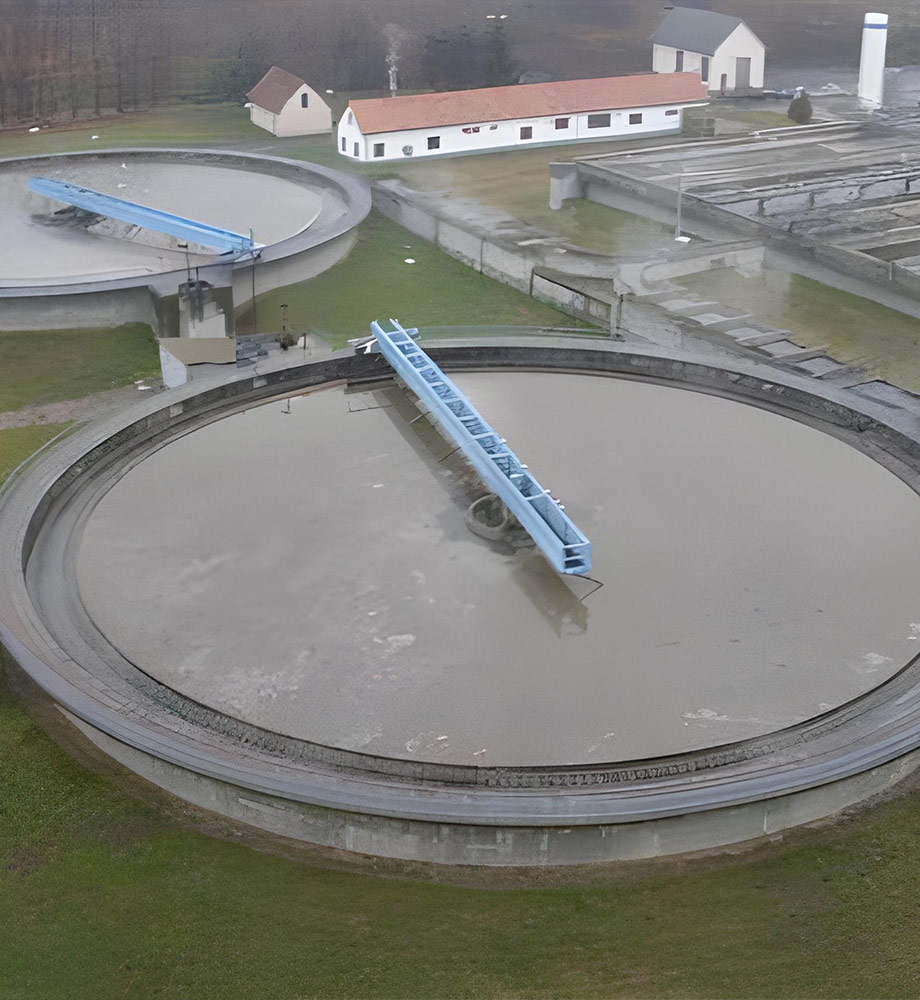Key Features
- FRP Tank Body: Non-corrosive fiberglass tank liner with reinforcement. Typical design includes an FRP cone or flat floor and vertical walls.
- Tailored Design: Customizable volume, shape (round, rectangular) and depth to meet required retention time and flow rates.
- Inlet/Outlet Fittings: PVC or FRP pipe connections, feed distribution trenches, adjustable baffle plates.
- Optional Accessories: Sludge hoppers, submerged launders or trippers, clean-out covers, and anti-vortex devices.
Benefits
- Reliable Solids Separation: High-settling efficiency with adjustable overflow weir heights.
- Minimal Maintenance: No corrosion means no peeling or rust deposits; easy to clean out settled solids.
- Quick Installation: Prefabricated FRP sections bolt together on site, speeding up construction.
Applications
Oil/water separation, grit removal, primary sewage settlement, tertiary polishing basins, stormwater settling ponds, and sludge thickening clarifiers.
Technical Specifications
Tank diameters from ~1 m to 20 m+ and depths up to 5–7 m are standard. FRP wall panels are typically 6–12 mm thick with vertical FRP C-channel stiffeners. Compliance with local codes (e.g. AWWA D120) is available. Inlet weirs and outlet launders match design flow (often 1–5 m³/m·hr).
Unique Selling Points
We can include lamella packs inside large tanks for high-rate clarification, or dual-zone tanks for flocculation/settling. Our FRP settling tanks withstand shocks (e.g. acid spurts) far better than concrete.

